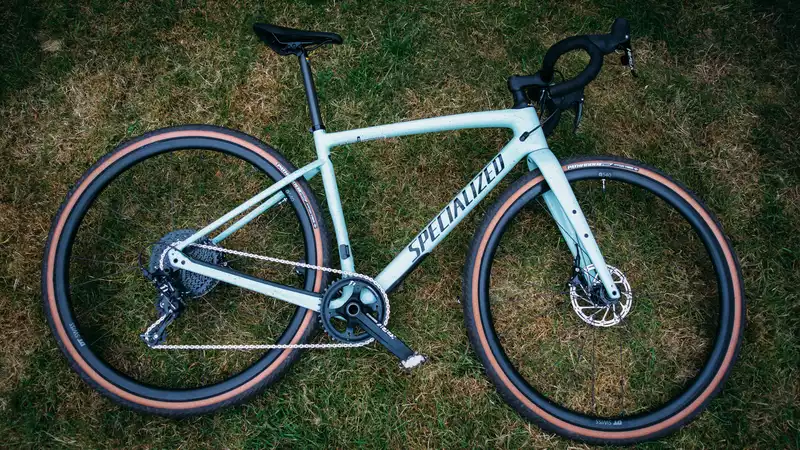It's Gravel Week here at Cycling News, and we're focusing on all things gravel. We cover everything from unbound technical galleries to the best gravel bike shoes to gravel e-bikes.
In that spirit, we've put together a few tips you can use to make your gravel bike roll a little smoother. It might be fair to say that gravel riding places additional demands on the bike because the terrain encountered is rougher, muddier, sandier, and rockier. At this point, I must include the now almost clichéd line that gravel riding means different things to riders all over the world.
However, this is true when it comes to bike maintenance and the demands gravel riding places on the bike. Wet, muddy gravel riding in the British winter (and often summer) is not the same as the sandstone and shale found in Colorado.
I have listed a few ideas and advice that hopefully will be useful to you no matter where you are a rider. Hopefully at least one of the ideas here is something you find interesting and will try in the future. But one thing is for sure, no one likes to get stuck in mechanical trouble during a ride or walk for miles in the middle of nowhere.
On gravel roads, there is a greater chance of falling off the bike from time to time, whether it is losing momentum on a steep climb or trying to negotiate a descent that is a little too difficult for your bike while being cheered on by your fellow riders.
If the bike lands on the drive side, the rear hanger is likely to bend. A badly bent hanger while riding is troublesome because it affects shifting, but it can also be a real catastrophe because the rear mech can dig into the spokes of the wheel and risk coming off.
The threads on most Co2 cartridges are the same as on most derailleur hangers. (M10 x 1.0) If you do bend the hanger in a spill, simply unscrew the rear mech (5mm hex wrench) and use a small, handy hanger alignment tool. It is also useful if you go out for a ride and you or a friend bend a hanger.
After a gravel ride, the bike gets dirty. Ask the riders who have had to fight "peanut butter mud" on unbound rides. A dirty or muddy bike means more washing and cleaning. If your bike is muddy, you'll need a hose and a high-pressure washer.
If you have to do a lot of cleaning, it's easy to squirt water into the bike bearings. Also, if you ride in standing water or in the rain, water can get into the frame and wheel hubs and pass through the bearing seals, causing premature bearing wear. Using thicker grease on the bearings in the headset, bottom bracket, and hubs will protect the bearings, extend their life, and save money.
You should not use a slippery, thin grease on the headset bearings, such as that used on the freehub jaws, for example. Invest in a thicker, water-resistant grease, or talk to your mechanic and ask him to use a heavier grease on the major bearings the next time you have your bike repaired.
I would avoid washing the bike with a hose or jet wash whenever possible. Instead, I prefer to use a soft microfiber cloth and a spray bottle of bike cleaner. This goes along with the above point about keeping water away from critical parts of the bike.
Waxing the frame and forks will keep dirt and dust from sticking to the frame paint, making cleaning much easier. The wax coating also keeps the bike clean and makes the paint stand out more. After a damp and muddy ride, the frame looks amazingly clean. Not overnight, but I think it makes a difference. If you're competing and your frame stays cleaner (and lighter) than your competitors, that's an advantage.
There are commercial bicycle waxes available, but I tend to use regular automotive carnauba wax. Also, there are frame finishes specifically designed for matte finishes, although this method will not work on frames with matte finishes.
Gravel riding generally means more dust and dirt. This means that the drivetrain may be exposed to more dirt, resulting in chain wear. Choosing the right chain lubricant for gravel riding can help minimize chain contamination.
For example, using wet or poor quality lubricant on the chain will cause dirt and dust to adhere to the chain and the chain links themselves to become dirty. This is especially true if the chain is over-lubricated and dripping with chain oil.
This is a great topic, but you might consider waxing your chain for gravel riding for starters. Alternatively, the best chain lube will give your chain a fighting chance in tough conditions.
This isn't so much a hack or trick, but it's worth including here. Gravel riding often takes you to remote and inhospitable places, demanding more from your bike and increasing the likelihood of mechanical problems and trouble.
Take the time to research the right spares and tools for your bike and consider investing in most of the essentials needed to get you out of trouble. Carrying exactly what you need to fix a flat tire, repair a broken chain, or zip-tie a broken part back to your bike will give you peace of mind and save you mental energy. Just because you're tubeless doesn't mean you're safe against punctures, and even newer bikes can have problems.
Being self-sufficient on a ride or trip will not only save you from trouble, it will also help your fellow cyclist riding partners along the way. If you are unsure about spares or essentials, seek advice from other experienced riders, local stores, or bike manufacturers.
.

Comments